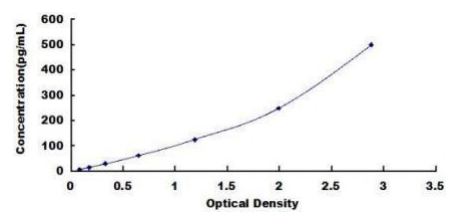Human IL-9 was originally identified as a cytokine found in the conditioned medium of a human T cell leukemia virus type I (HTLV-I) transformed T cell line that is mitogenic for the factor-dependent human megakaryoblastic leukemic cell line, M07e. This human cytokine and its murine homologue are now designated as human and mouse IL-9. The gene for H IL-9 has been mapped to human chromosome 5. As in the mouse system, the human IL-9 cDNA encodes a 144 amino acid residue precursor protein with an 18 amino acid signal peptide that is cleaved to form the mature cysteinerich protein with a predicted molecular mass of 14 kDa. Human IL-9 contains four potential Nlinked glycosylation sites and the native HIL-9 is a highly glycosylated protein. Human and mouse IL-9 share 56% and 67% homology at the amino acid and nucleotide levels, respectively. Although murine IL-9 is active on human cells, human IL-9 is not active on mouse cells. Human and murine IL9 are also capable of enhancing in vitro survival of human T cell lines as well as synergizing with Epo to support erythroid colony formation in vitro.
Renauld, J.C. et al. (1993) Adv. Immunol. 54: 79.
Kelleher, K. et al. (1991) Blood 77: 1436.
Merz, H. et al. (1991) Blood 78: 1311.
Yin, T. et al. (1995) J. Biol. Chem. 270: 20497.
Nicolaides, N.C. et al. (1998). Proc. Natl. Acad. Sci. U.S.A. 94: 13175.
Little, F.F. et al. (2001) Am. J. Respir. Cell Mol. Biol. 25 : 347.


